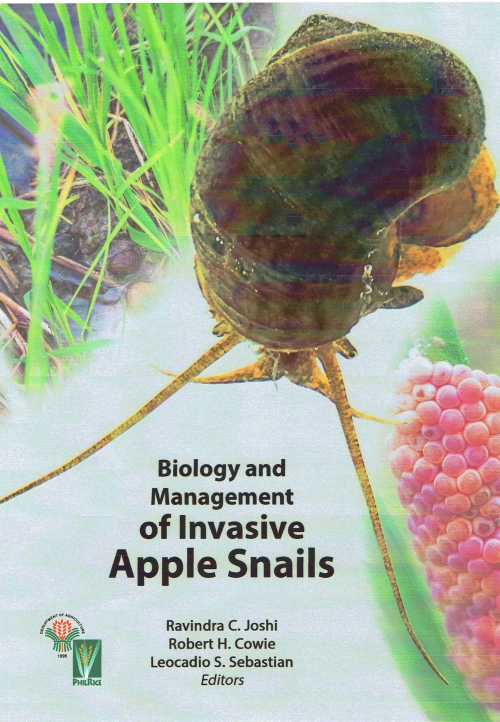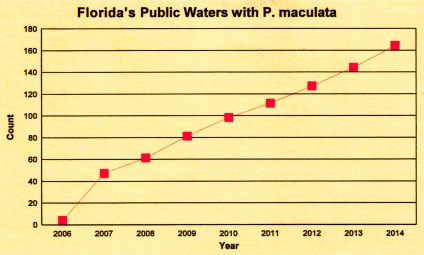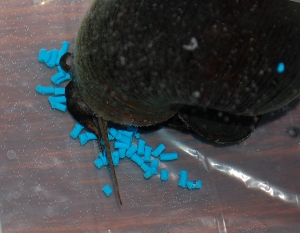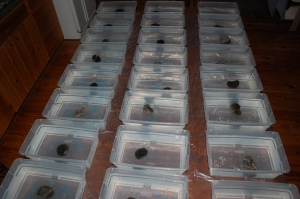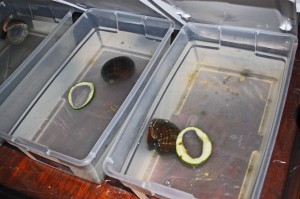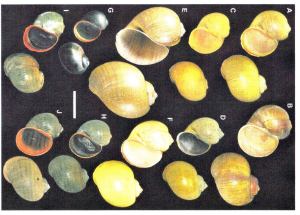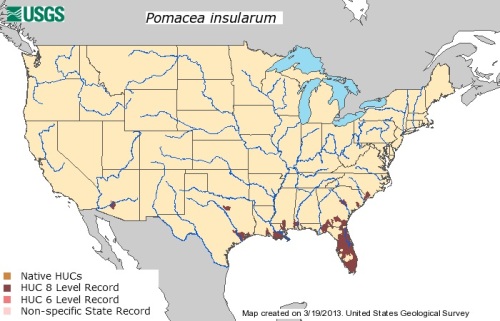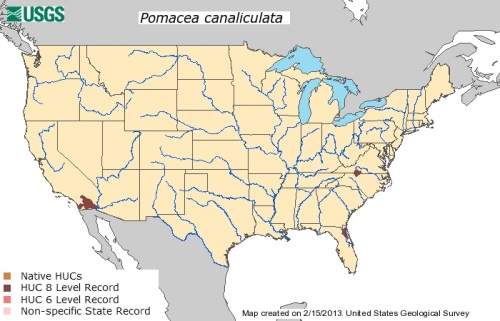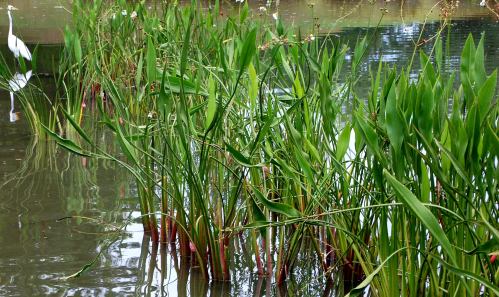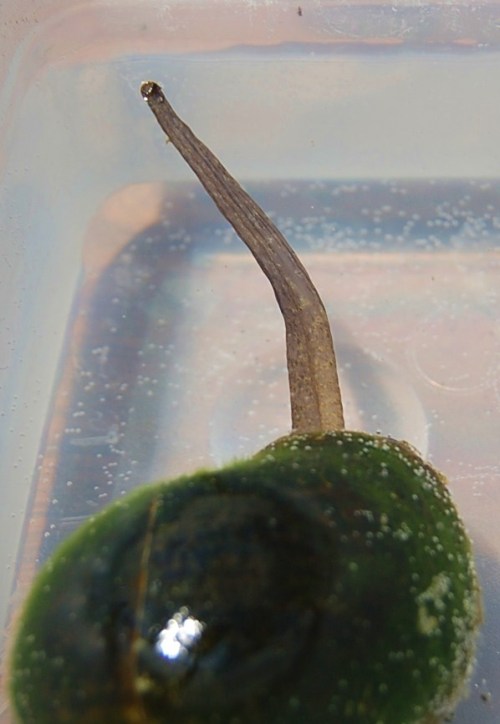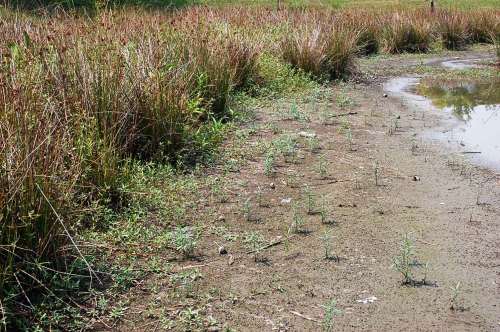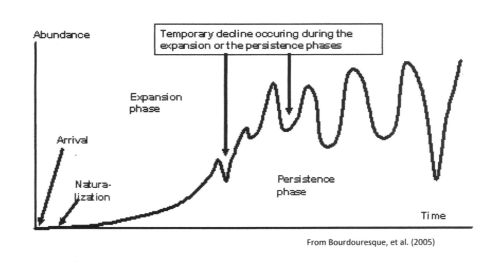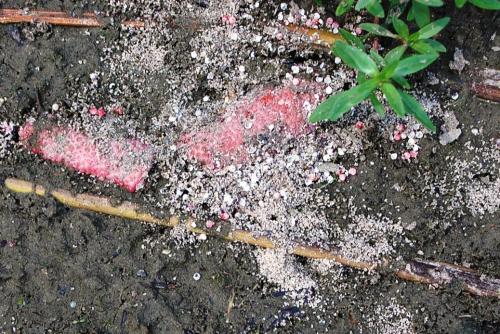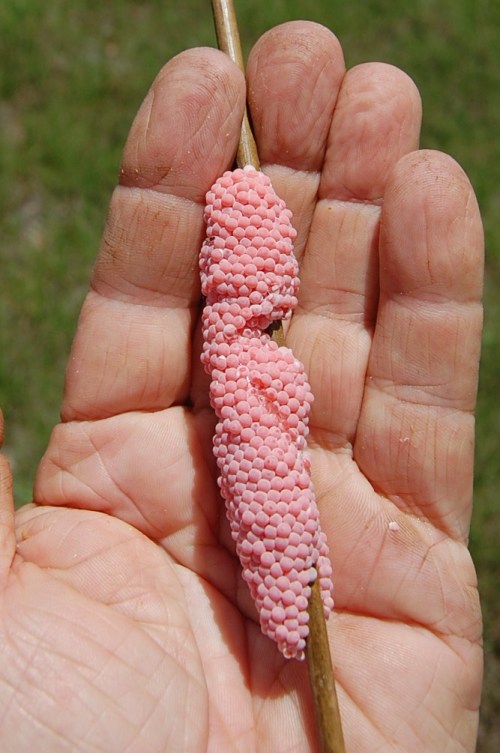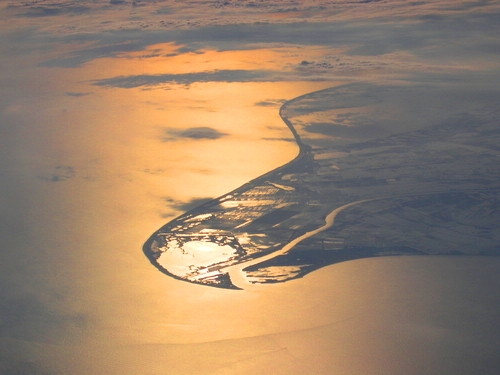
The Ebro Delta (350 km2), located in Tarragona at the southern end of Costa Dorada, is the largest wetland in Catalonia and is the second most important natural wetland habitat in Spain. About 8,000 ha of the delta are natural park sites, part of the Natura 2000 network of the European Union. The delta has high biodiversity and productivity, excellent fish and wildlife habitat, and important water purification and storage functions. Plant diversity is extremely rich with 515 species catalogued. Large pools surrounded by giant reed beds occupy the coastal portions. No wonder the Ebro Delta is the second most important bird habitat in Spain. Economic activities include agriculture, fisheries, aquaculture and tourism. Rice cultivation, however, is the dominant use.
On August 1, 2009, the Island Apple Snail (Pomacea insularum) was first documented on the European Continent. Its conspicuous, bright-pink egg clusters were detected on shoreline vegetation along a small irrigation canal, adjacent to a fish farm in the Ebro Delta. The range expansion of the exotic snails was explosive. Within a month, they had colonized half of the interconnected canals in the northern half of the delta (up to 5.1 egg masses m-1) as well as the main river channel (up to 6.2 egg masses m-1). After reviewing the literature, local experts recognized the great potential of widespread economic and environmental damage.
Government agencies quickly implemented plans to eliminate the pest manually, mechanically and chemically hoping to avoid harmful effects on agriculture and native biodiversity. All emersed vegetation from 16 miles (26 km) of shoreline in the initial area of infestation was harvested and incinerated to no avail. The desiccation of 9,500 hectares of the delta for five months at a cost of 3.5 million € in attempt to eradicate the snails proved fruitless. In spite of these and other extreme measures, “the ability of the Island Apple Snail to thrive and disperse in the Ebro Delta shows that this bridgehead is firmly established,” writes Miguel Angel López of the Catalonian Government Environmental Department.
I have been in communication with a biologist who is currently assisting the frustrating struggle to stem the Island Apple Snail’s invasion of Europe: “The Environmental Department has been hand-collecting adults, putting barrier traps in the irrigation canals, destroying egg clutches, and burning shoreline vegetation in non-sensitive areas to remove egg substrate. They are now using saponins as well. The snail is occupying an area of the delta where there are mostly canals for habitat. The Environmental Department has mapped about 240 km (150 miles) of canals which are infested. We regularly have sustained temperatures of 9 or 10º C during winter here with occasional drops below zero and there has been snow here during two of the last five years, and they seem to be doing just great! Copper is not permitted as there are native bivalve species sharing the irrigation canal habitat. Baits are problematic as the current in the canals rapidly disperses them. Despite the Environmental Department’s efforts with a crew of 30 people, there seems to be no end in sight. The bottom line is more funding is needed to get ahead of this pest. Any suggestions from your experiences would be appreciated.”
O.K., I’ll give it my best shot: Clearly, the situation is dire; the wetlands of an entire continent are at stake. In my opinion, the ultimate solution is biological control via some selective pathogen, though such an organism will not be easy to find (or create). At present, containment is paramount. Accidental transport of the exotic snails to other aquatic sites must be prevented. In my experience, anglers with boats on trailers are most often responsible for the inadvertent dispersal of invasive, aquatic species. In the case of Pomacea, however, aquarium hobbyists have played a major role.
Within the Ebro Delta, I suggest that you focus on Pomacea’s two key vulnerabilities: the conspicuousness of its eggs and its vulnerability to chemical attractants. Continue to collect eggs, as much as manpower will allow, and possibly make some money to subsidize your control efforts. Biotechnology companies in Taiwan are spending huge sums to develop technologies to extract the anti-oxidant Astaxanthin from Pomacea eggs. These companies estimate that the value of the anti-aging, skin care products based on that active ingredient could reach over $400,000,000 annually. Natural Astaxanthin is currently priced at $7000/kg (not a typo). Maybe, a Spanish biotech firm would like to participate and fund the collection of Pomacea eggs in the Ebro Delta!
Regarding baiting, do not underestimate the chemoreception capabilities of the Island Apple Snail. Even with some flow, Pomacea can be drawn to the right attractant. For collection (or poisoning), bait stations make sense. I have shipped Miguel one of our traps with non-toxic bait to test. By doing so, I am not
suggesting that trapping and collecting snails along 240 km of canals is practical. However, with an attractant bait that is also toxic, progress could be made in reducing the population of adult snails. I am in touch with a company that produces an innovative, plant-derived molluscicide, and am eager to incorporate it into the bait we produce for laboratory testing. I will let you know how that goes. Good luck with your battle, Miguel! Posted by Jess Van Dyke
For more information, contact:
Miguel Angel López
Catalonian Government Environmental Department
Miguel.Lopez@gencat.cat
